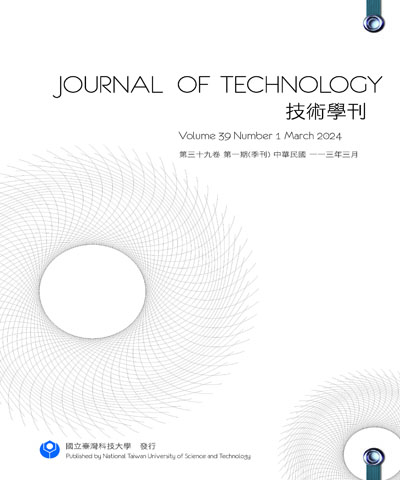
技術學刊/Journal of Technology
國立台灣科技大學,正常發行
選擇卷期
- 期刊
Particle swarm optimization (PSO) is a well-known and popular computational intelligence (CI) algorithm. The inertia weight of a PSO plays a crucial role exploration and exploitation abilities. Many strategies for adapting the inertia weight of PSOs have been proposed in the recent years. In this study, the adaption for the inertia weight of PSOs was researched. Three ordinary inertia weight controlled PSOs and five chaotic maps-based adaptive inertia weight PSOs were examined in fairly performed comparisons. A total of twenty-three widespread benchmark functions with 10 dimensions for unimodal functions, multimodal functions with many local optima, and multimodal functions with a few local optima are used to evaluate these adaptive inertia weight PSOs. By the comparison of the average performed values, the better methods based on the evaluation results were screened for different benchmark functions which are helpful for solving different applications.
- 期刊
本研究所探討的對象為由一般八輪甲車所衍生發展而具備兩棲功能的浮游甲車,由於滿足浮游性能之兩棲甲車,其重量、重心位置及動力系統等可能與原型甲車相異,故本研究對於此一兩棲甲車的陸地翻覆安全性能做深入的分析及探討。文中探討車輛翻覆之安全控制,以主動轉向(Active Steering)及差動剎車(Differential Braking)作為控制輸入,採用閉迴路跟隨模型架構(Model Following Control Structure),以理想之虛擬車輛模型之穩態響應,作為實車追隨之目標。本研究以LQR二次線性最佳化控制法則為基礎,再使用粒子群演算法(Particle Swarm Optimization),分別以搜尋LQR之權重矩陣Q間接求得增益矩陣K,及直接搜尋系統參數所得增益矩陣K作比較,來求解控制系統目標函數之最小值。最後利用Matlab®/Simulink® 軟體結合TruckSim® 卡車模擬軟體,以驗證控制成效。模擬結果顯示以直接搜尋法求得之系統最佳增益值較佳,能有效提高車輛高速行駛時之操控穩定性。最後,藉由灰理論來偵測翻覆控制的啟動時機,能讓翻覆控制系統提早介入示警,未來在實車應用上能更有效率且安全地達到翻覆控制目的,有效降低行車危安風險。
- 期刊
In this study, pozzolans were used to design three mixtures of concrete. In the first mixture, ordinary Portland cement (C00) was used; in the second, slag substituted 30% cement (C30); the third was a combination of slag (20%) and fly ash (30%) with cement 50% (C50). The mixture were poured into mockup blocks (180 × 180 × 160 cm) to obtain the temperature-time curve considering different measurement locations (Points 1-4: the top, middle, and bottom of the block and ambient), compressive strength (included core), and electricity resistivity. The following results were obtained: maximum temperature, 73.2 (C00), 69.4 (C30), and 63.2°C (C50); maximum temperature differential, 21.8 (C00), 21.6 (C30), and 17.6°C (C50); and temperature-time increasing gradient (λ), +2.541 (C00), +1.468 (C30), and +1.078°C/h (C50). C50 mixture satisfied the demands of maximum temperature ≤70°C, maximum temperature differential ≤ 20°C, and λ (minimum) and had enhanced 56-day compressive strength and electrical resistivity. The pozzolans-to-binder ratio and cement content could lead to a reduction in the temperature by 1.94°C/10% and an increase in temperature by 4.6°C/100 kg, respectively.
- 期刊
本研究主要探討多機零工型工廠之生產排程問題,在多機多途程之順序不一之假設下,考慮各機台加工之間具有非對稱之整備時間,使用隨機優化演算法(Random Optimization Algorithm,簡稱ROA),將演算法導入人工智慧領域中之智慧代理人(Intelligent Agents,簡稱IA)之理論,以四種績效指標為目標,即總完工時間最小化、總延遲天數最小化、總延遲罰鍰最小化與總延遲訂單數最小化等,可依使用者之需求選擇單一目標進行求解。此外,並建置一智慧型排程系統,加入實務上之需求,新增VIP客戶以及臨時插單等功能,以利提升整個生產效率。將數據結果與常見之派工法則(FIFO、EDD)當作初解去做比較,研究結果證實本研究提出之演算法能有效改善排程績效。
- 期刊
Social networking trends are changing people's lifestyles. Therefore, the modes of cybercrime have also changed in accordance with the users' activities. In order to identify crimes, it is necessary to use appropriate forensic techniques to retrieve relevant traces and evidence. In this paper, we focus on the Android mobile phone forensics and Windows 10 computer forensics for the Dcard application. We strive to find digital evidence from users in their operation of Android mobile phones and Windows 10 operating systems. The tests consisted of installing Dcard social networking application, conducting common user activities through this application, acquiring image files of hard disks and physical memory, and performing manual forensic analysis on each acquired image file. The forensic analysis was aimed at determining whether activities conducted through Dcard application was stored on the device's internal memory and hard disc. We adopted a variety of tools to create and analyse image files from the mobile phone and computer system. This study, which features of the Dcard application, shows that the application has evidentiary traces allowing for suspect data to be reconstructed or partially reconstructed, and whether device forensics permits the reconstruction of that activity. It will be helpful to forensic analysts and practitioners because it assists them in mapping and finding digital evidence of Dcard applications.

